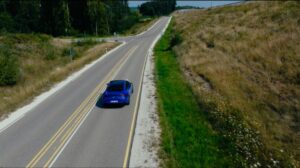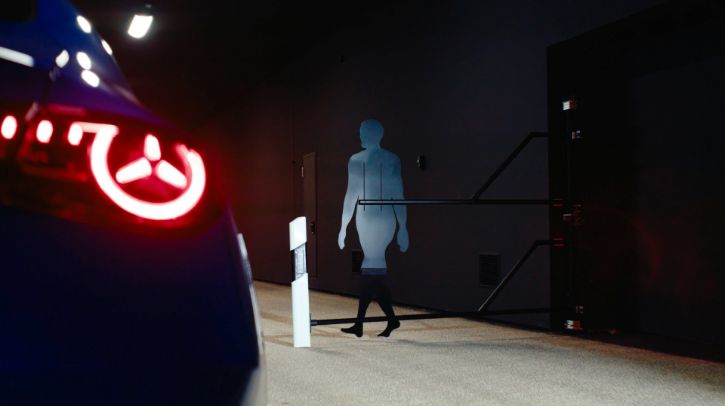Mercedes-Benz has opened an advanced light testing center. At 135m long and 8m high, the new light testing center ranks among the largest of its kind in the automotive industry. It enables detailed testing of headlight systems under constant, reproducible conditions – independent of time of day, weather or environmental influences.
A complete country road spanning 135m is authentically recreated. The asphalt mixture used for the road surface was specially developed to replicate the reflective properties of an aged road as closely as possible. Up to five cars can be tested in parallel, and testing includes simulation of oncoming vehicles. Reflector posts can be deployed at the sides of the road in 20m increments, and pedestrian dummies can be flexibly integrated. The investment in the light testing center amounted to €10.5m (US$12.3m), and construction took two years.

Driverless Heide durability circuit
Mercedes-Benz says that Immendingen continues to set new standards across the industry with its high-tech testing facilities and advanced testing methods, including the automated Heide durability circuit. In this test, robots steer test vehicles completely autonomously along a rough-road track. The track’s potholes, bumps and cobblestones strenuously test the chassis and bodies of vehicles.
Automation of this process is designed to increase the precision of driving maneuvers, reduce strain on human test drivers, enable 24/7 operation and significantly accelerate testing.
Mercedes-Benz says that 1km on the Heide durability circuit is equivalent to 150km of real-world driving on an extremely rough road, littered with deep potholes and other imperfections. Depending on the type of vehicle, test cars must complete up to 6,000km on this circuit, which is equivalent to 300,000km of real-world driving.

Consistent digitalization
The Heide durability circuit also has a digital twin. The proving ground is digitally mapped down to the submillimeter level, and vehicles and loads are digitally mirrored. This data is used in preliminary simulations, serves as load spectra for test benches, and enables test results to be quickly fed back to the development departments.
“The Immendingen Test and Technology Center is the first digitalized Mercedes-Benz proving ground,” said Markus Schäfer, a member of the board of management at Mercedes-Benz Group, and chief technology officer for development and purchasing. “Here, real and virtual vehicle testing merge seamlessly. By digitally mapping the proving ground, using automated test programs and employing state-of-the-art sensor technology, we are making vehicle development more efficient, faster and more sustainable than ever before.”
In related news, from invisible to accountable: measuring global road safety performance


